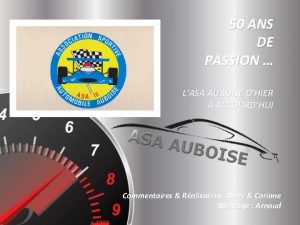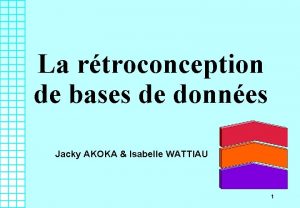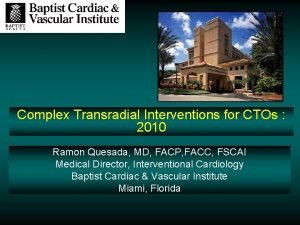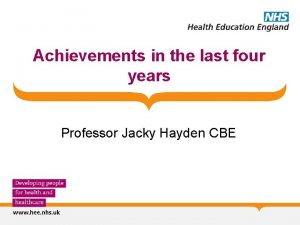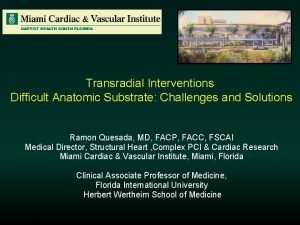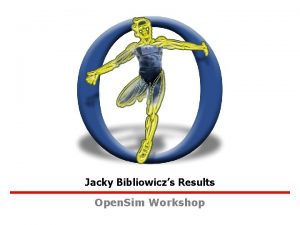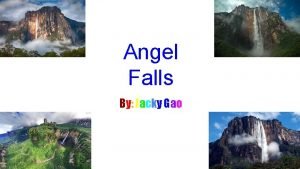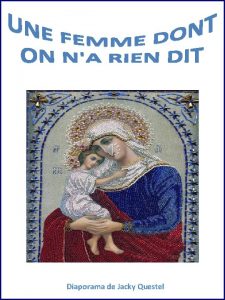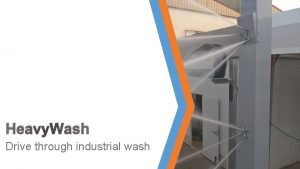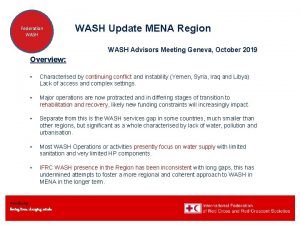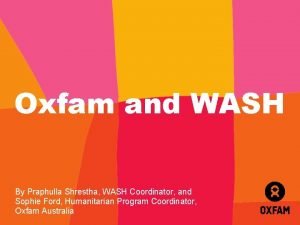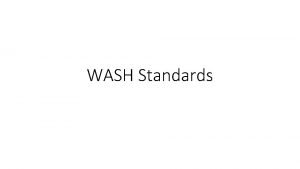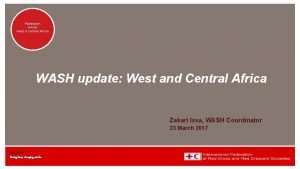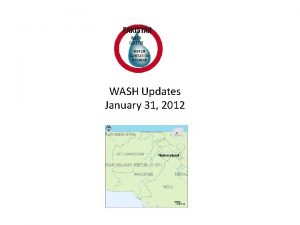WASH and Environment in MAGADASCAR Jacky Ralaiarivony WASH











- Slides: 11

WASH and Environment in MAGADASCAR Jacky Ralaiarivony WASH Specialist, USAID Madagascar November 2013

MADAGASCAR HERE Source: Wikipedia, the free encyclopedia

VEGETATION IN AFRICA Source: Wikipedia, the free encyclopedia

OVERVIEW § One of the World’s top biodiversity hotspots § one of the world’s poorest countries 92% of the population survive on less than $2 per day § 3. 9 million people (28% of rural households suffer from food insecurity § 9. 6 million people (61% of the population) are at risk of falling into food insecurity during the lean season § High vulnerability to natural disasters: the last cyclone killed 26 people, affected 40, 000 others and damaged 40, 000 Ha of cropland § 39% of the population had no sanitary facilities, another 27% having only the most basic § 30% of the population rely on unprotected surface water, 22% rely on unprotected wells § 52, 000 tons of illegally-cut precious woods have been exported since 2009 § Nearly half a million dollars of illegal rosewood was shipped out of the country daily § Forest are cut, key watersheds including one that supports the leading rice production are of chronically food insecurity in Madagascar, continue to erode

ENVIRONMENT • Conservation programs – Natural resources Management – Ecosystem conservation (Habitat and Biodiversity) – Civil Society strengthening (Advocacy and lobbing) – Environment system strenghtening Basically… integrated conservation & livelihoods initiatives • Conservation approaches – – Establish Conservation plans Increase local population’s awareness and ownership Follow-up human activities around protected areas Provide opportinities to local population to have access to some income generating activities

Water, Sanitation and Hygiene (WASH) Improved adoption of key hygiene behavior: Ø Community-Led Total Sanitation (CLTS) approach Ø WASH related IEC/BCC activities and community mobilization with Community Health Workers (CHVs), local stakeholders and with Madagascar WASH coalition Improved Access: Ø Construct and rehabilitate fee-for-use blocs sanitaires, water kiosks, gravity-flow water systems, protected wells and water pump boreholes. Ø Provide technical assistance to local private businesses to set-up and to extend their business models to include WASH products and services. Ø Promote the Village Saving and Loans approach Ø Provide technical assistance to Microfinance institutions (WASH related loans) Improved Quality: Ø Comply with World Health Organization (WHO) water quality standards Ø Ensure that USAID WASH infrastructures were subject to a strict Environmental screening procedure (EMMP, ESF, EMMR).

WASH activities crosscut several pillars ØEnvironment ØPrevention of major water diseases (Health) ØEconomic /development results ØSound water management reflects Good Governance ØEducation




THANK YOU MISAOTRA



